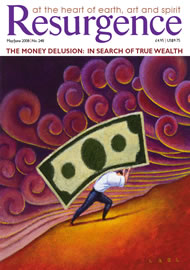THROUGHOUT THIS BOOK, I was reminded of a comment that Gary Snyder made in a 1996 issue of Paris Review: “The first step…is to make us love the world rather than to make us fear for the end of the world.” To be encouraged in our understandings, imagination and capacity to forge connections is an infinite, fundamental thrill to the deep-feeling reader. Back on the Fire repeatedly satisfies this thrill-seeking tendency of the heart and mind.
Political and spiritual consciousness are key themes throughout as Snyder considers the ways in which we can live sensitively. There’s a tough-love mindset at work in the material, emblematised in the austere and dazzling dust-cover image. Snyder writes about poetry, the relationships between art and our environments and, specifically, early in the book, forest management, stating, “I’m concerned with two things: our new understanding of the ecological role of fire and something bigger that goes with that, the possibility of a truly sustainable forestry in the Sierras.”
For Snyder, the task each of us has is to connect with our surroundings, then learn from them, and finally share that learning through action. Snyder always returns to a welcome sense of the everyday and there’s a playfulness in much of his expression. Unsurprisingly, he writes with authority and warmth, and in his plain speaking way observes that “In this time of New World Disorder, we need to find the trick of weaving civilised culture and wild Nature into the fabric of the future. These will take both art and science.” Rethinking, re-imagining even, is the book’s heartbeat.
Back on the Fire is divided into two untitled parts. The first focuses around ecology, fire and forests and articulates the notion of stewardship. Snyder also thoroughly examines the relationship between literature and ecology and its ability to explore “the dark side of Nature – nocturnal, parasitic energies of decomposition and their human parallels”. A chapter called ‘Migration/Immigration’ considers relationships between ecology and immigration, and in ‘Entering the Fiftieth Millennium’ Snyder delights in the resonances of ancient cave cultures.
The second part of the book is a little more diverse and varied and includes a reprint of the foreword to a non-Snyder book about Maidu Indian mythology, a piece concerning Allen Ginsberg’s last days and a wonderful memoir – a quest narrative if you like – entitled ‘Harriet Callicote’s Stone in Kansas’. My movie-mind became animated here as I imagined a short film based on this piece.
Then, too, there’s Snyder’s cataloguing of other writers currently engaged in similar work to his. Definitions and etymological concerns pepper the work, and the instruction and example of East Asian culture familiarly anchors much of the writer’s thinking and feeling.
Although rooted in some very specific American physical reference points, the book is necessarily and compellingly global. In ways it feels like a prayer or meditation as it joyfully roams a varied terrain of ideas, presented in a heartening and engrossing way.
I think Back on the Fire serves as an even more useful primer to Snyder’s body of work than the massive and mesmerising reader of several years ago. This is a book about some of the responsibilities we have: to the world we live in and to one another. Snyder embraces the challenge with the rallying cry, “Stay the course, my friends!”







